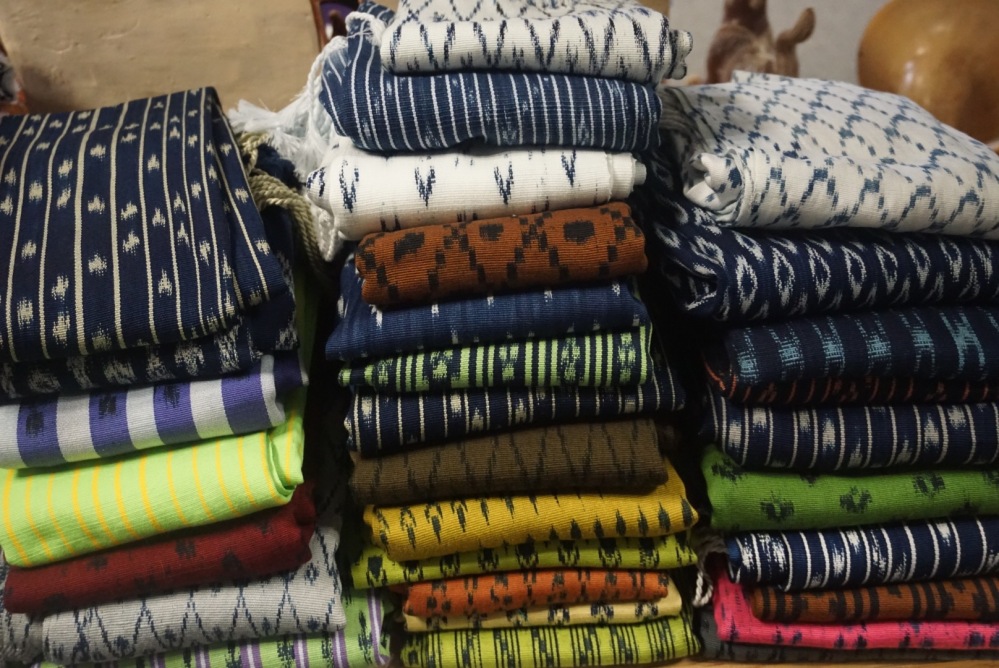To inaugurate the spotlight series we’re starting with…the artisans! Doña Laura, the president of the association, and the eight other women who make up the association here in Tacabamba have been so welcoming to me since the very beginning that I couldn’t think of a better group to highlight first.

So, what exactly do the artisans make? Great question! The textile is named paño o pañon de leche, which means milk cloth. Weird name, right? Well that’s because the original use of the pañon was to wrap your baby on your back so you could easily cart them around. In fact, women in my town still do this and you can see them going about their daily activities of cooking, buying fresh fruits and vegetables, etc. all while their babies are hanging out on their backs. They are now also used as shawls; to adorn tables, beds, or some type of furniture in the house; or in the traditional Peruvian dance of Marinera. The artisans also use the fabric to make purses, blouses, etc. to diversify their product.

The actual process of making a pañon is arduous. It takes about 4-6 months, depending on the size. This is because they are made using the technique of ikat, which means the thread is tie-dyed before it is woven. The artisans then weave the thread, 100% cotton in the case of pañones, using a backstrap loom. The traditional colors are white and blue, but the artisans make all sorts of multicolored pañones to satisfy modern demands.

The market for their product exists mostly outside of town. They receive speciality orders over the phone or they travel to different fairs around Peru in order to sell their product. Since the association has been established for many years, they receive many invites from different groups. This past July, they were invited to the Ministry of Culture’s annual, now semi-annual, artesanal fair in the National Museum in Lima. I had the opportunity to attend this event with them, which was a wonderful opportunity to see the beautiful work of different artisans from all around Peru.

A couple of months ago, I went to a Reuda de Negocios in Cajamarca, our regional capital. The Ministry of Production hosts this event in several regions in Peru in order to promote artesanal products and make it easier for small producers to make business deals with businesses who want to buy their product. We were able to network with a hotel and an online site who were interested in our product.

In September, we had our patron saint festival here in Tacabamba. This event is a huge deal and the busiest time of year for our town. The first couple days are the fair days, where artisans and producers can show off their products, whether it be textiles like the artisans or guinea pigs, a favorite dish of Cajamarquinos. The next few days are filled with bullfights (don’t worry, still vegan, didn’t go!) and the nights are spent dancing and enjoying the bands that travel to perform in Tacabamba for the festival. I had a great time with the volunteers who came to visit. It was also another opportunity for the artisans to sell their product.

Last weekend, I accompanied the artisans to a fair in Cajamarca. It was called “Consume lo que Cajamarca produce”, Consume what Cajamarca produces. This meant all the products at the fair were from the region, everything from chocolate to speciality fruits. We didn’t have many sales at this event which proved that sometimes the fairs aren’t all that lucrative, but can be good networking events. It solidified the fact that we need to work on producing more local markers in or near site, which is something I know the artisans are interested in.

Overall I’ve loved the time I’ve spent developing relationships with the artisans and observing the hard work they do. I hope that in my time here I can help them develop their business and financial management skills. And maybe I’ll learn to weave??
Very interesting! Beautiful weaving!
LikeLiked by 1 person